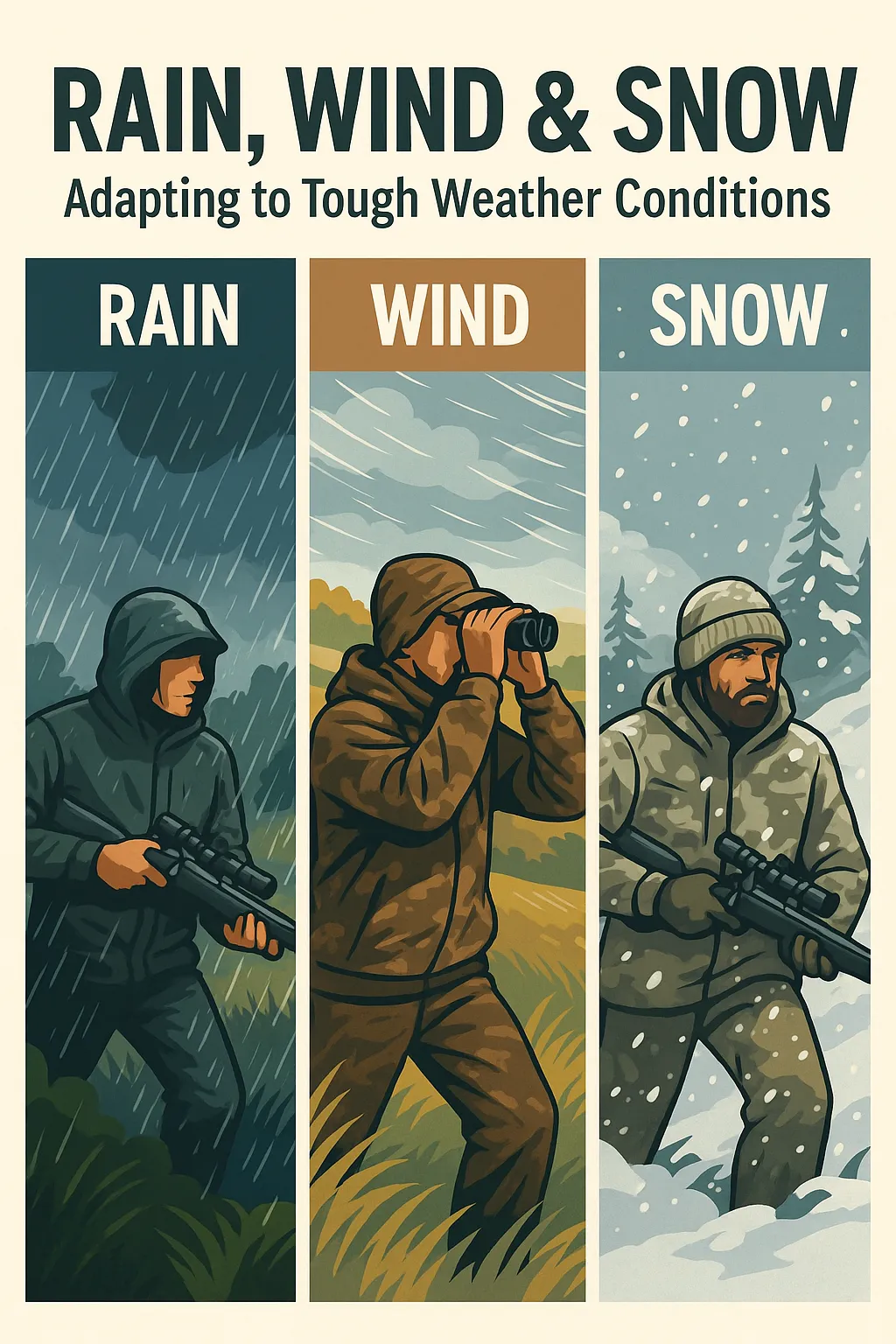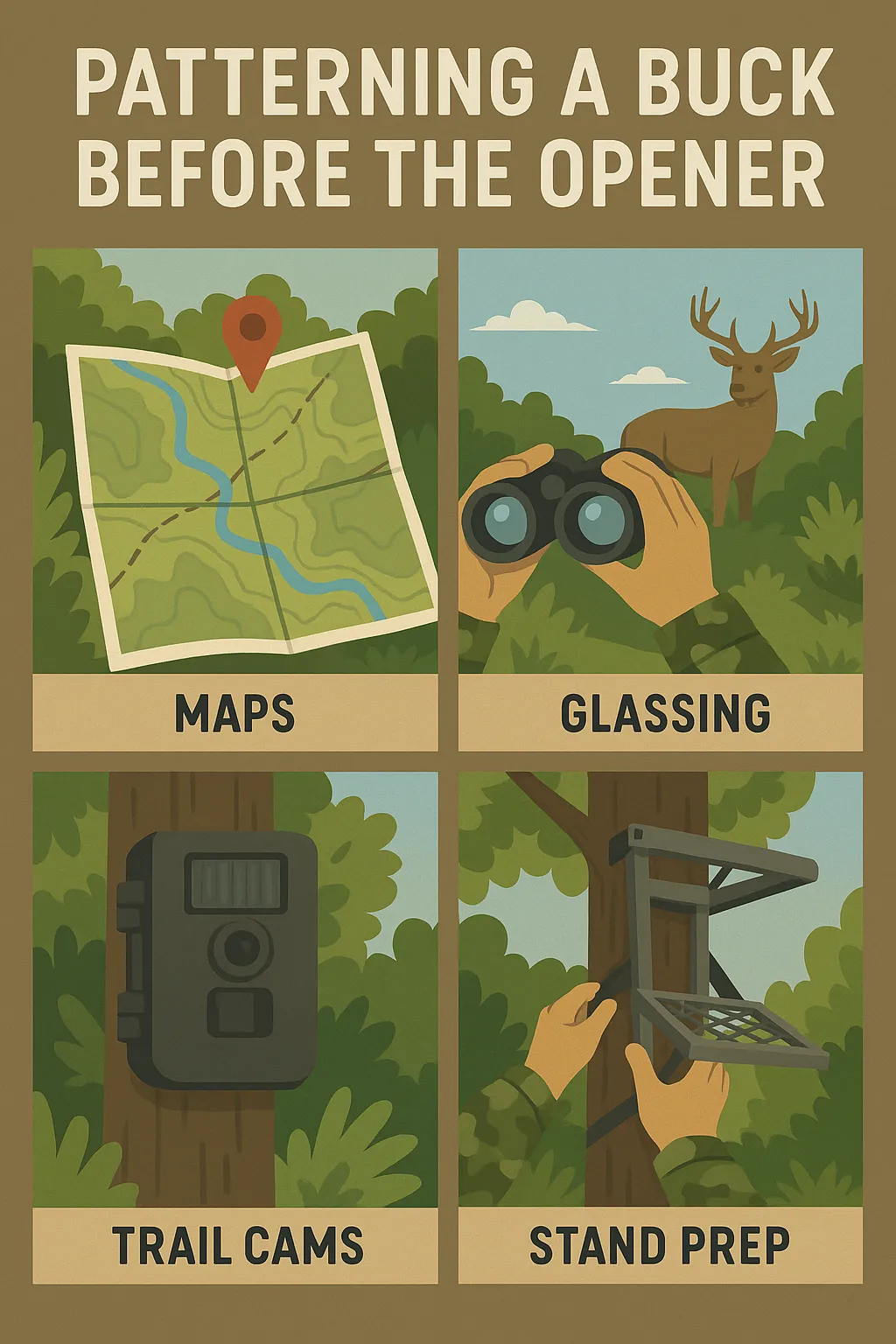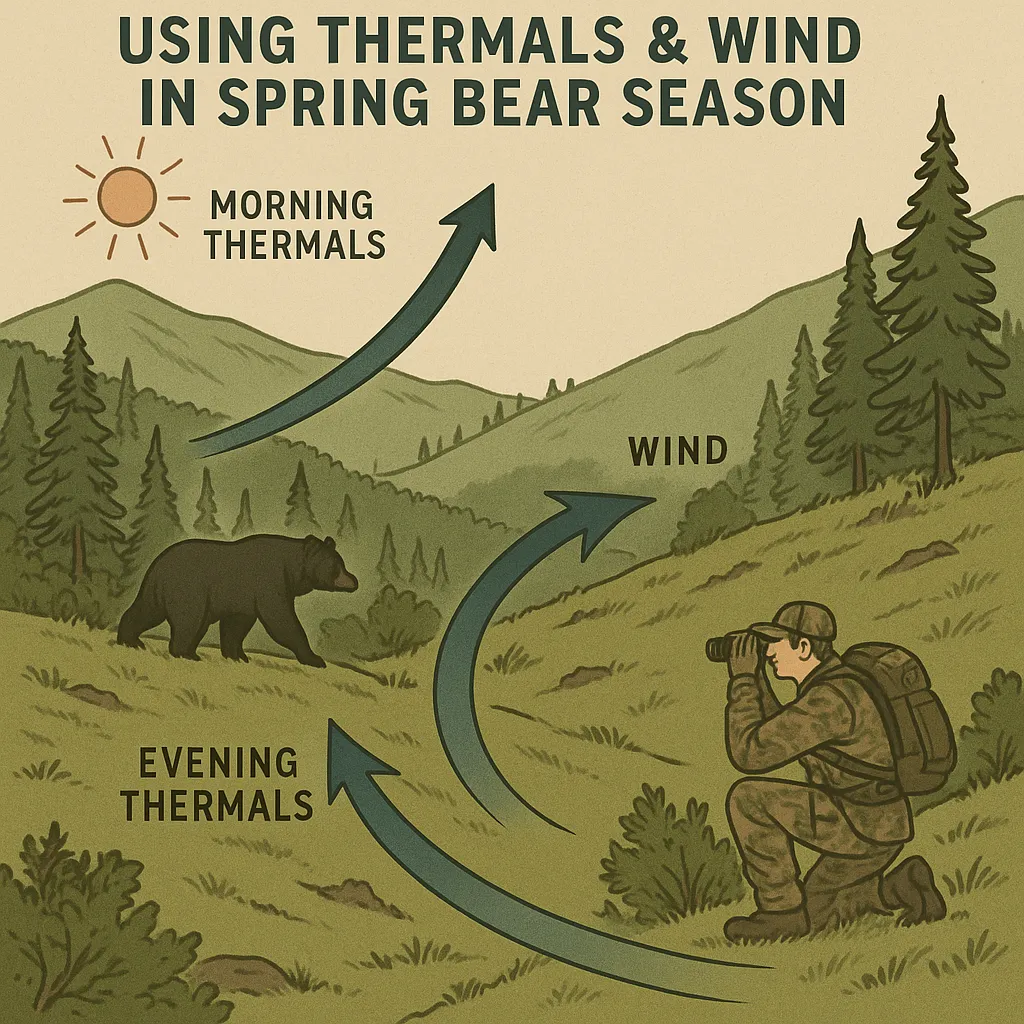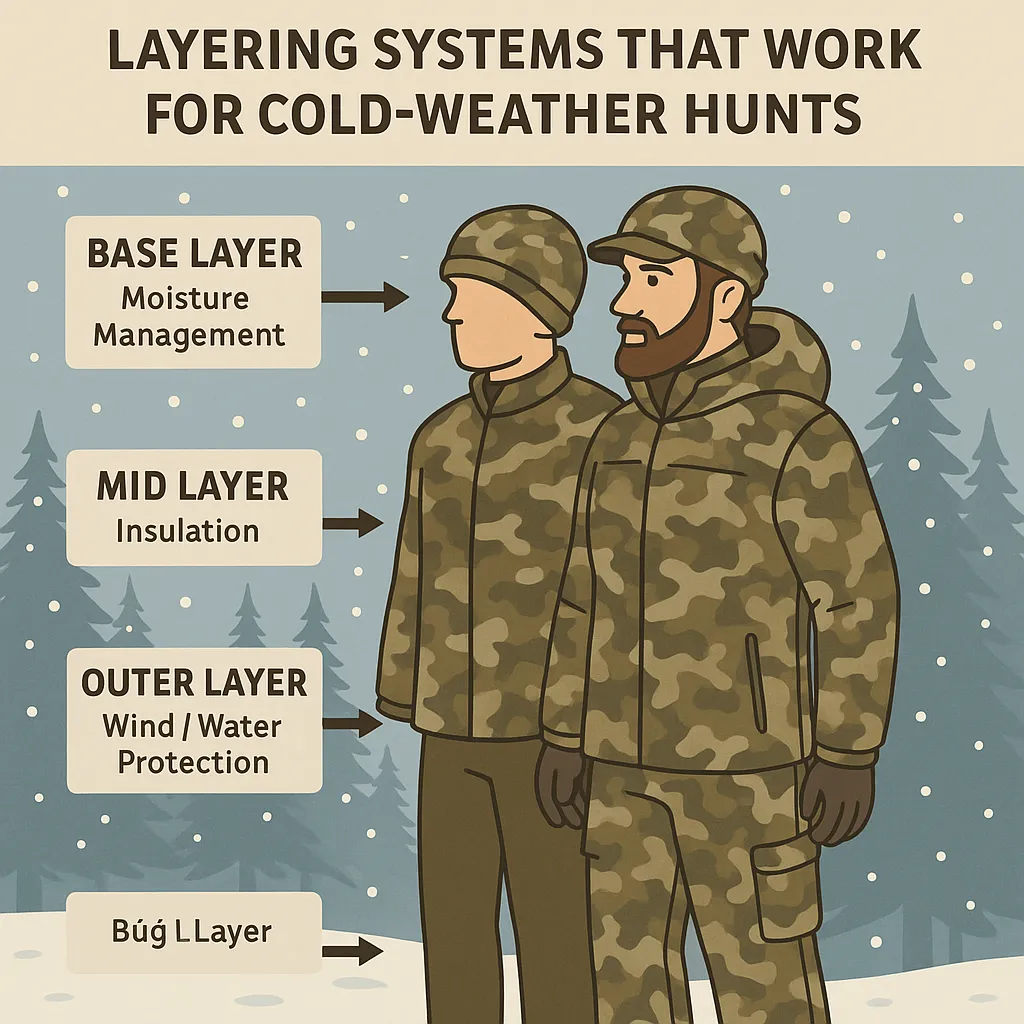
Rain, Wind & Snow: Adapting to Tough Weather Conditions
Bad weather isn’t bad for hunting—it’s just misunderstood. From sudden downpours to cutting winds and deep snow, tough weather creates windows of opportunity for hunters willing to adapt. Animals don’t stop moving in harsh weather; they just move differently. If you adjust your strategy, gear, and timing, these “miserable” conditions might become your best days in the field.
Here’s your go-to guide for adapting to rain, wind, and snow with confidence, grit, and smart setups.
🌧️ Hunting in the Rain: Silent Stalks & Surprise Encounters
🧠 Animal Behavior:
-
Rain softens sound and scent—ideal for still-hunting or stalking
-
Light rain: deer, elk, and hogs move more in daylight
-
Heavy rain: bedded down or hold tight to cover—use transitions
📍 Tactics:
-
Stalk slowly through damp woods—moss, mud, and wet leaves silence footfall
-
Focus on edge habitat: where cover meets feed
-
Use natural funnels and saddles between bedding and feeding zones
🎯 Best Conditions: Drizzle with rising pressure post-storm
🎙️ “The rain masked my wind and sound—I slipped in to 40 yards on a bedded buck in thick cover.”
— Hunter P., Alabama
🧰 Essential Rain Gear:
-
Lightweight waterproof shell (quiet fabric, not crunchy)
-
Rubber boots + gaiters
-
Waterproof bino harness + dry bag
💨 Hunting in the Wind: Directional Movement & Thermal Games
🧠 Animal Behavior:
-
Moderate wind = animals move into the wind to scent-check areas
-
High wind = reduced movement in open areas, but cover zones stay active
-
Wind increases thermal volatility—expect erratic scent paths
📍 Tactics:
-
Set up on leeward sides of ridges or inside treelines
-
Use wind to push scent away from bedding areas
-
Hunt low, quiet corridors where animals seek shelter
🎯 Windy-Day Species Target: Mule deer, coyotes, and hogs in heavy wind bedding
🎙️ “Wind pushes bucks off the open ridge. I set up in a thick drainage—and they slipped right past at 11AM.”
— Sasha M., South Dakota
🧰 Essential Wind Gear:
-
Wind puffer or milkweed to test currents
-
Flexible tree saddle or low-profile ground blind
-
Polarized eyewear for glassing in gusty light
❄️ Hunting in Snow: Fresh Tracks & Predictable Beds
🧠 Animal Behavior:
-
First snow = movement spike, new feed patterns
-
Snowstorm = animals bed down or move short distances
-
Post-storm = heavy mid-day activity as animals dig out to feed
📍 Tactics:
-
Still-hunt fresh tracks in soft snow
-
Glass sun-facing slopes on clear days
-
Focus on thermal cover: cedar thickets, blowdowns, creek edges
🎯 Best Time: 12–48 hours post-snowfall when sun and calm wind return
🎙️ “Fresh snow, high pressure, and a full stomach—that’s when big deer make their move. Be there when they do.”
— Jake L., Maine Northwoods
🧰 Essential Snow Gear:
-
Insulated boots + gaiters for deep snow
-
Handwarmers + bino chest pouch
-
Compact snow saw or trekking poles for pack-out
🧠 Pro Weather Tactics That Always Pay Off
✔️ Storm Before the Storm: Hunt the 2–6 hour window before weather hits—animals sense it coming.
✔️ Leeward Bedding Zones: In wind or snow, leeward slopes are warmer, calmer, and protected.
✔️ Hunt Longer Midday: Harsh weather compresses movement into warm hours—10AM–2PM.
✔️ Glass Before You Move: In snow and wind, animals hold tight—let your optics cover miles.
✔️ Go Mobile After Rain: Track quietly, scout new rubs, wallows, and feeding zones freshly exposed.
🎙️ “I stopped avoiding rough weather—and started hunting smarter through it. It’s changed my success rate every season.”
— Devin K., Western Kentucky
📦 All-Weather Gear Checklist
| Item | Why It Matters |
|---|---|
| Waterproof outer shell | Stay dry during rain and wet snow |
| Merino wool base layers | Thermoregulating and stays warm even when wet |
| Windproof neck gaiter | Blocks gusts + retains core warmth |
| Rubber boots / insulated soles | Essential for mud, marsh, or frozen terrain |
| Milkweed or wind checker | Detects shifting scent patterns during storms |
| Dry bag or waterproof pack | Protects optics, maps, food, and layers |
📣 Resources & References
-
Apps: HuntStand (weather & wind), Windy, GOHUNT Terrain Tools
-
Videos: MeatEater – Storm Tactics, Midwest Whitetail – Hunting in Snow
-
Communities: Weather-Wise Hunters, HuntSmart Forum, All-Terrain Archery Network
💡 Pro Tip: When others stay home during the storm, you gain the edge. Be early, be quiet, and be ready.
🌟 Final Shot: The Weather Is Your Weapon
Rain muffles your approach. Wind erases your scent. Snow reveals the unseen. If you treat tough weather like an obstacle, you’ll miss the best opportunities. Adapt your plan—not just your gear—and let nature push the odds in your favor.
“Bad weather doesn’t ruin the hunt—it creates it. All you have to do is show up.”
Leave A Comment
Related Posts
Using Thermals & Wind in Spring Bear Season In spring […]
Layering Systems That Work for Cold-Weather Hunts When the mercury […]






